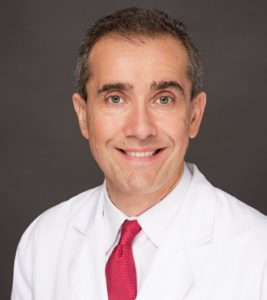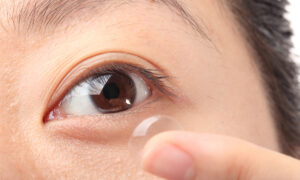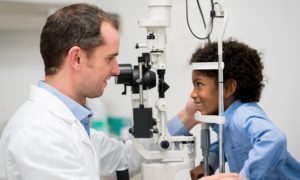May 11, 2020
By Nicholas Despotidis, OD, FAAO, FCOVD, FAAOMC

Nicholas Despotidis, OD, FAAO, FCOVD, FAAOMC
For myopia management, the COVID-19 pandemic presents some significant challenges.
The first is, of course, keeping patients and staff safe by closing practice doors or reducing hours and adding safety protocols. These are difficult adjustments, though not unique to optometry.
A second challenge, though, is unique to vision care. The expanded social isolation we are all living with now encourages the very behaviors that for years have contributed to driving pediatric myopia numbers up – more hours inside and more time spent staring at smartphones or screens.
When I was in optometry school a generation ago, we were taught that myopia was primarily driven by genetics. Since then, new research and personal experience have changed that understanding. For example, neither my wife nor I are myopic, yet both our children were diagnosed by me when they were in grade school. That experience is the main reason I got into this specialty.
So if the condition is no longer defined just by genetics but also social behavior as research has shown, that makes the initial talk with parents and the child more important than ever.
Here’s how I approach that sensitive conversation when I’m talking with pediatric patients and their parents about screen-time. I explain that kids don’t spend as much time outside as they used to, and most parents never knew about the relationship between outdoor play and eyesight. I discuss the importance of outdoor time and that the rate of myopia development isn’t inevitable. Blaming parents or the child is not the right approach.
Separately I also tell parents, “Don’t say anything to your child right after this appointment. They’re smart kids. Let them digest it on the way home.”
We have four optometrists at Eyecare Professionals in Hamilton Square, New Jersey, and we provide a wide range of care, from general eye exams to vision therapy to medical optometry and orthokeratology.
Orthokeratology, or corneal shaping as we describe it to our patients, is my specialty. We have grown the myopia practice through referrals from current patients and their families, which is the best way. If we treat our current patients effectively, they will tell friends and family members, through social media and the soccer field, they become ambassadors for our care. That is how we built our practice over the past 20 years. Now we see myopia control patients every day.
There are other treatment options for myopes, and new ones are emerging, such as CooperVision’s MiSight 1 day lenses, but orthokeratology has two advantages. First, it can be effective in slowing the progression of myopia, and delaying or even preventing the serious eye health risks it presents. Secondly, it allows the child to see clearly without vision correction during the day.
Soon the restrictions on eye care practices will be eased or even lifted completely, depending on where your practice is located. But how will your patients respond?
I have had some experience with a shutdown. In September 2001, just a week after the attacks on the World Trade Center in New York City and the Pentagon in Arlington, Virginia, there was an anthrax scare, with anonymous mailings of anthrax powder. Some of those mailings came to a postal location near our practice in Hamilton, and for a time we were forced to shut down, as were other local businesses.
We learned that when businesses opened up again, our specialty patients came back. The primary patients did not return at the same rate, but those patients who needed us for myopia management or other specialties stayed with us. I expect that will happen again, so I am optimistic. That is a crucial thing about myopia care – parents are doing it for their children, so they will do whatever it takes.













